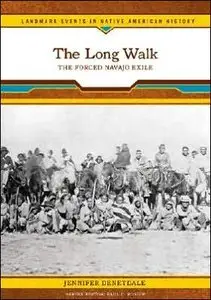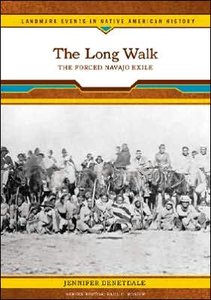Jennifer Denetdale "The Long Walk: The Forced Navajo Exile (Landmark Events in Native American History)"
Chelsea House Publications | 2007-11-30 | ISBN: 0791093441 | 143 pages | PDF | 1 MB
Chelsea House Publications | 2007-11-30 | ISBN: 0791093441 | 143 pages | PDF | 1 MB
Through a series of treaties, the first of which was signed in 1849, the Navajo Nation began to cede its homeland to the U.S. government. By this time, some Americans had begun to settle in Navajo territory-the present-day Four Corners region of Arizona, New Mexico, Colorado, and Utah-but the real impetus for wanting the Navajos' land was greed. Led by General James Carleton, the U.S. Army hoped to remove the Navajos and claim the extensive mineral and pastoral wealth of their lands. In June 1863, Carleton presented the Navajos with an ultimatum: Surrender by the following month or accept the consequences. After the Navajos refused to capitulate, Carleton ordered his field commander, Colonel Kit Carson, to carry out a scorched-earth policy to destroy their crops and livestock. By the end of the year, the Navajos were destitute and starving and began to surrender to the U.S. Army. What followed was one of the most tragic events in U.S. history, the forced removal of the Navajos to Bosque Redondo, a reservation in eastern New Mexico. Collectively known as the Long Walk, the approximately 400-mile-long series of marches was endured by more than 8,000 men, women, and children. The forced removal from their homeland and the subsequent internment at Bosque Redondo left an indelible mark on the Navajo psyche that continues to the present day.



